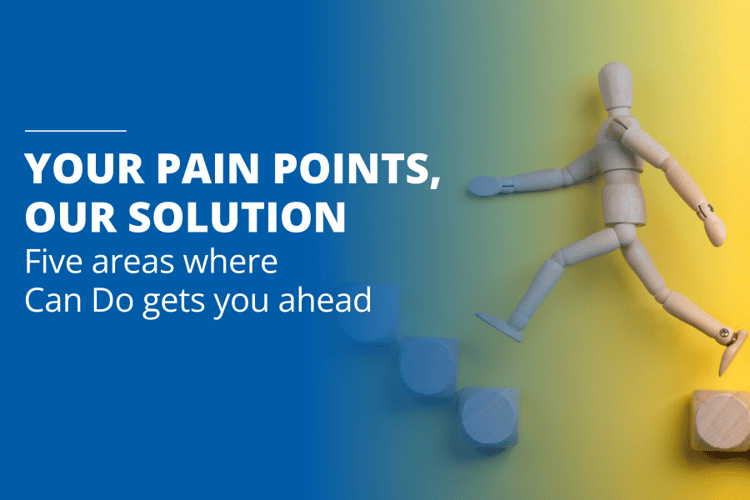Cost-cutting - increasing efficiency without additional resources
Cost-cutting is currently at the top of the agenda for many companies. In the face of economic uncertainty and rising...

When I present our Can Do project management platform to interested parties, of course I also talk about the "unique selling points" of the software - such as our own AI and special algorithms or the innovative approach to company-wide skills management. However, the focus of the consulting is always on the question "Where is the shoe pinching in project management?"
Over the years, it has become clear that while each company faces its own unique challenges, there is also a great deal of overlap. These can be broken down into five topics, and if you read on, you will certainly notice: Quite a few of the points also belong to the "pain points" in your project management or your company:
The five overarching themes where there is a need for optimization in almost every company are:
Let's take a look at this in detail:
Resource management is, as we have often stated, the supreme discipline of project management. But it is precisely here that there are often deficits that need to be addressed:
Can Do addresses all of these issues with its AI-driven resource and skills management: Capacity planning and resource allocation are transparent, cross-project and company-wide. Teams are assembled according to skills and capacities. Project simulations facilitate project planning, and both vacation planning and time tracking are integrated into the PM platform.
Small projects, small challenges - big projects, big challenges: Portfolio management brings with it yet another set of completely different issues. These include, among others:
This is where it becomes noticeable that Can Do's project management is virtually infinitely scalable: Everything that was said about resource and skills management in the previous chapter applies without restriction to even the most extensive portfolios.
While many companies are still wondering whether AI can also be used for project management, Can Do has already been using it successfully for years (and, as of August 2023, is working on the second evolutionary stage of AI, which was developed specifically for the Can Do PM software). This is joined by other technical methods that enable, for example, seamless integration of software already in use. Companies whose project management does not yet rely on AI and such methods must deal with these limitations, among others:
Having control over a project at all times, correctly assessing any risks and keeping an eye on all eventualities as far as possible during project planning: This is not only difficult, but also almost impossible to manage with conventional project management. Companies that do not yet use Can Do often report these difficulties in the area of controlling and risk assessment:
Can Do's proprietary software algorithms and AI are also used in these areas. They identify impending project risks and provide clear recommendations for action. They create project simulations with a high degree of informative value and support long-term, project-appropriate resource planning and procurement.
It is actually quite clear, but unfortunately it is neglected far too often: Every software can only show its advantages and capabilities if it is accepted by the users and they use it gladly and goal-oriented. However, the daily software routine in many PMOs is still far too often quite different: In a heterogeneous environment, project planning with Excel® spreadsheets, data maintenance with other programs and "project management" with notes exist side by side - and get in each other's way more than they complement each other in a meaningful way. In such cases, a "big clean-up" is urgently called for: When switching to the uniform (and user-friendly!) PM platform Can Do, a whole series of obstacles and annoyances in project management are eliminated at the same time, such as:
Do you recognize the challenges of your company or your project management in some of the above examples? Then you are not alone: these are exactly the neuralgic points where project and portfolio management repeatedly and in numerous companies gets stuck. The good news is that Can Do can support you in a highly effective way and make your PM fit for a future full of successful projects - in time, in quality & in budget. Would you like to learn more? Arrange your personal Can Do presentation right now! I look forward to demonstrating the right solution for your "pain points"!
Ariane Becker is in continual exchange with interested parties from various industries. Her main focus is to bring the right information and suitable experts together and getting directly involved in the use cases and the software.
Cost-cutting is currently at the top of the agenda for many companies. In the face of economic uncertainty and rising...
Increasing digitalization and the introduction of artificial intelligence (AI) are fundamentally changing the way in...
At Can Do, we attach great importance to the exchange with students and the opportunity to share our knowledge of...